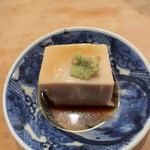
小谷
kotani
3.70
Hakata
「Japanese Cuisine」
10,000-14,999円
--
Opening hours: 18:00-22:00 (LO21:00)
Rest time: Sundays and holidays Business hours and holidays are subject to change, so please check with the store before visiting.
福岡県福岡市博多区博多駅前1-11-4 中尾ビル 2F
Photos
(20)

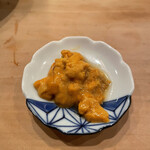
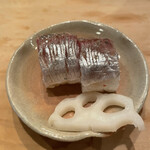
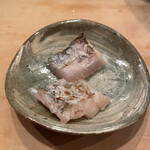

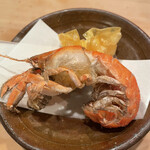
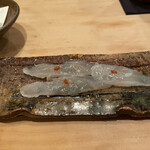
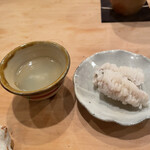
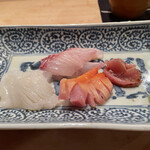
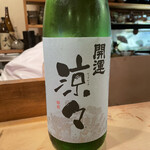
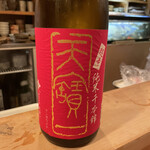
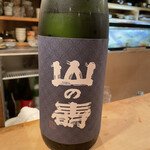
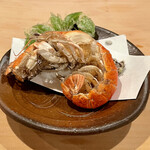
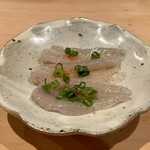
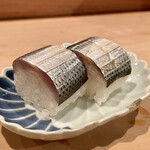
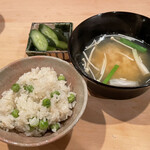
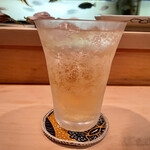
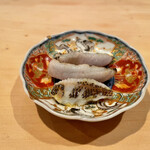
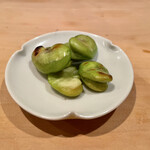
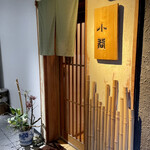
Details
Reservation Info
(on) a subscription basis
Payment Method
Cards accepted
(JCB, AMEX, Diners)
Electronic money is not accepted.
Number of Seats
20 seats
Private Dining Rooms
having
Smoking and Non-Smoking
No smoking at the table
Parking
None
Facilities
Counter seating available, tatami room available
Drink
Sake and shochu available
Dishes
Focus on fish dishes
Comments
(21)
ぱたぱたぱたごにあ
4.00
Located a 5-minute walk northwest from Hakata Station, on the second floor of a mixed-use building, is Kotani-san. This hidden gem izakaya offers exquisite small plate dishes. The dishes, centered around fresh seafood sourced daily from the market and fish prepared by the chef, are truly exceptional and pair perfectly with drinks. The quality of the fish is outstanding, and the signature dishes like peanut bean sprouts and bean rice are also superb. I found a restaurant in Hakata that I would love to visit again.
Visited in April 2023:
Kotani-san had been on my list for a while, recommended by Kyomann. The variety of small plate dishes that go well with drinks sounded amazing, so I decided to go right away. I think it had been about two years since I first heard about it, haha. The restaurant is located on the second floor of a mixed-use building in front of Hakata Station, with no particular signs. It has a charming atmosphere that you can't go wrong with. There are 6 counter seats. The owner may look intimidating, but he is warm and friendly when you talk to him. I started with a light highball and then moved on to sake. The omakase dishes for the day were as follows:
- Sparrow seabream
- Majaku (Japanese horse mackerel) karaage and konbu oil
- Fava beans simmered and grilled
- Spring mackerel finished with cherry blossom leaves
- Grass pufferfish with kan-zuri
- Hakata Bay kohada pressed sushi
- Clam, bamboo shoot, lotus root suri-nagashi
- Aori squid aged for 3 days, magochi, white mirugai, red clam, salted horse mackerel
- Asari clam ankake chawanmushi
- Peanut bean sprouts, mackerel miso-marinated
- White mirugai root end seared
- Pickled and seared belt fish, fuki
- Iwashi bo-zushi with yuzu pepper
- Bean rice
Drinks:
- Ju Asahi Junmai Ginjo Hanzai Label Hatsudoi
- Yamagata Masamune
- Takara Kengo Junmai Sake Yuusui-shikomi
- Yamanosuzu Tokubetsu Junmai Sake Yamada Nishiki
- Ibusuki Ri8 on the rocks
- Iki Chingu Natsu Jyoujyou on the rocks
I was extremely satisfied with the small plate dishes. The flavor of the sparrow seabream that the chef had probably caught was irresistible. The Majaku karaage with konbu oil from the Ariake Sea in Kyushu, the early-season konbu oil, the spring mackerel finished with cherry blossom leaves, and the deliciously fatty grass pufferfish with kan-zuri were all outstanding. The quality of the fish is remarkable, and the dishes that go well with drinks are truly exceptional. In between, the Hakata Bay kohada pressed sushi was a highlight, and my excitement level skyrocketed. The sashimi was also great, but the quality of the fish was truly outstanding. And of course, the peanut bean sprouts at Kotani-san are a must-try. The aroma of the bean sprouts and peanuts makes it a perfect dish to enjoy with drinks. The meal ended with the classic bean rice, and the flow of the meal was perfect, leaving me completely satisfied. Kotani-san was truly amazing! High-quality fish, small plate dishes featuring seasonal ingredients. I hope to revisit soon. Thank you for the wonderful meal.




yisno1
4.10
I had a wonderful time. The dishes all go well with alcohol, so I ended up drinking too much, but everything was delicious and satisfying. The owner may seem tough at first, but his face lights up when serving his proud dishes. The expression when saying, "This is the fish I caught," is enough to make me sure I'll come back. I will visit again. Thank you for the meal.




③オバタ
4.30
The owner of this place goes out on his boat every three days to fish near Genkai Island, catches fish with his boat, and brings them alive to the restaurant's tank to serve to customers. It's a unique business style. Fun fact, before the pandemic, I also had a boat at the Nabikawa next to Marinowa, and the owner of this place also had a boat there and was part of the same fishing boat association. We might have met at a fishing competition event! Now, onto the course, it starts with "Abuttakamo" which is a type of fish, and it was my first time trying it and feeling its texture (laughs). The course consists of various small dishes, including sashimi. Each plate is small, so you can enjoy a variety without getting bored. I left the sake choice to the owner and asked for an omakase selection. Even though I was already full, it seemed like there was more food coming, so I decided to skip the main course and had chawanmushi as the final dish. Thank you for the meal!
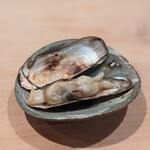

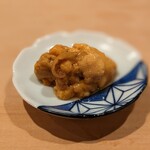
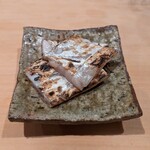
HINÅTA
3.60
A small restaurant with about 7 counter seats. There is a parking lot next to it, so women don't have to walk far to get to the shop. The menu seemed to consist only of chef's choice courses. The dishes were served in small portions, making it easy to eat, and the timing of when the food was brought out was just right for me. I really liked the plum rice dish at the end! However, the order in which the dishes were served felt a bit strange. The cleanliness of the fish tank and tables inside the restaurant was a bit of a concern, and the counter area was a bit messy. The chef was friendly and nice. Overall, I personally felt that the quality for the price was a bit low. Sorry about that.
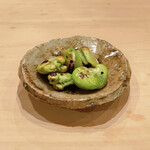
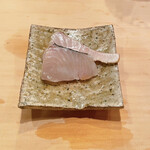

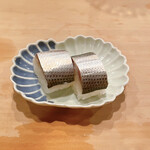
Junimn
3.80
A truly thrilling restaurant. Run by a fishing enthusiast chef, this small eatery is dedicated to serving meticulously crafted dishes. There is no flashy or pretentious atmosphere, but the food is simply delicious. It's the complete opposite of ostentatious restaurants. It's best to sit at the counter and quickly eat the piping hot dishes served. If you linger taking photos, the chef's sharp gaze will catch you. The chef is quiet, but the younger staff members are friendly and make the place very inviting. I want to visit at least once a month.
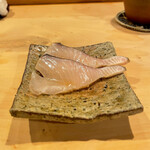

jayhawk
4.00
I heard there is a relaxing restaurant near Hakata Station, so I went there with a friend on a weekday night. It is located on the second floor of a building one street away from the main road, so it might be a bit hard to find. We had a course meal with various dishes such as sesame tofu, red sea urchin, horse mackerel from Ariake Sea, yellowtail from Hakata Bay, swordfish soup, pufferfish, spear squid, white clam, octopus, snow crab sauce over steamed egg custard, fried fish, rice cooked with mackerel, and more. The dishes were perfect for enjoying with sake.
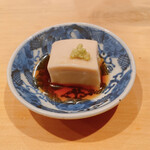
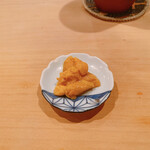
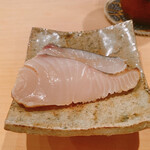
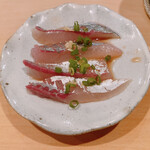
ごーや47
4.00
I found a cozy little restaurant where you can enjoy delicious fish dishes, so I visited with guests from Tokyo for a relaxing drink. We were seated at the counter, where we could watch the chef cooking right in front of us, and beyond that, there was a tank with fish that the chef had caught swimming around. The only option available was a course menu for ¥11,000. The course included grilled broad beans, seared duck, horse mackerel sushi, uni from Omura Bay, peanuts sprouts from Nokonoshima Island, clam soup from Yatsushiro, sashimi (squid, red snapper, mirugai), grilled mirugai, simmered octopus and daikon, kochi with pickled turnip, conger eel with butterbur sprouts, conger eel tempura, steamed clams with sake, chawanmushi with tairagi clam, himo (part of a fish), needlefish and asparagus roll topped with dried mullet roe, rice with pickles, miso soup. The dishes mainly featured local seafood and vegetables, with a unique twist. The dishes were perfect for pairing with alcohol, and we had a wonderful time. Thank you for the delicious meal.
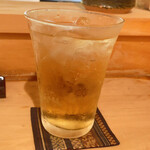
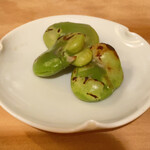
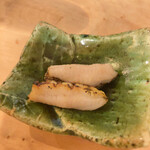
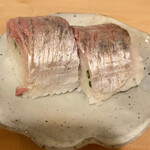
choccoz
4.30
I personally do not submit reviews to Tabelog for restaurants that are just okay, but Kotani is a top-notch establishment. You can enjoy over 20 small dishes, each with a little bit of something. As you get older, being able to savor delicious food in small portions is truly appreciated. What's interesting is that in addition to the small plates, they also bring out a few items on a large plate. While there are issues with the rating system on Tabelog, if Kotani were in Tokyo, it would definitely have a rating of 4.0 or higher.
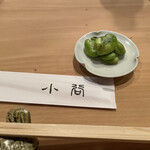
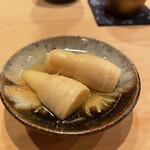
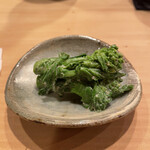
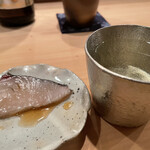
くまくま社長の食べログ
3.90
Hidden gem in Hakata, a restaurant highly regarded by professionals. What sets this place apart is the chef's skill in preparing freshly caught fish, which is expertly killed and aged to perfection. The omakase course for 10,000 yen is a steal, with affordable drinks to match. And best of all, it's easy to make a reservation. After struggling with hard-to-book restaurants, this place feels like heaven. A truly wonderful dining experience, thank you for the meal.
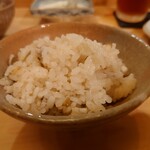
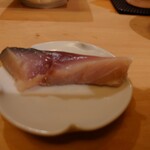
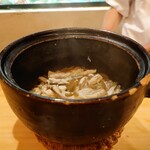
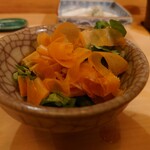
口福ヤマトモ
4.80
I visited this restaurant for the second time. Last time, I sat in a private room for a business dinner so I couldn't take photos. This time, I sat at the table next to the counter, maintaining distance while enjoying a conversation with the chef. It's like heaven for those who love sake. You can enjoy high-quality dishes here. The ingredients are great, the skills are top-notch, and the flavors are just right. I think this is one of the best restaurants in Fukuoka in this style of dining. The meal started with a smooth white miso dish, followed by smoked saury which was fantastic, with the smoky flavor standing out. The dish of boiled bamboo shoots and seaweed was excellent, with the earthy aroma of bamboo and the ocean scent of seaweed. The palate cleanser was a deep-fried yellowtail (no photo, unfortunately). The sushi with broad beans and ark shell had a wonderful aroma and a crunchy texture. The pufferfish was amazing, with a texture that felt like the cells were still alive, bursting in the mouth. The steamed oyster in oil was rich and flavorful. The mackerel sashimi was a bomb of umami and fat. The daikon radish and peanut sprouts stir-fry was delicious, cooked with thick white oil and a bit of soy sauce for a fragrant taste. The flounder, flatfish, geoduck clam, and firefly squid were expertly cut, with the aroma of the geoduck clam standing out. The clam chawanmushi with sauce was flavorful, and the whale sashimi was incredibly tasty, with a mix of fat and meat. The raw sea cucumber with sea urchin was the perfect appetizer, bursting with intense umami. The Ezo deer had a slightly milky taste that intensified with each bite. The fried dish with shirako wrapped in herring roe and shiso leaf was elegant and delicious. The fried bone-in chicken was flavorful, allowing you to fully enjoy the taste of the chicken. The oyster and grated radish salad was refreshing, and the salt-grilled beltfish was tender and fatty. The yellowtail pickled in salt with mustard on top of turnip was delightful. The plum-infused rice was flavorful, and the miso soup with fish broth was comforting. For dessert, I had chestnut simmered in its own astringent skin, beautifully presented. The selection of Japanese sake was outstanding, and you can also pair it with the dishes. This restaurant is one of the best places in Fukuoka to enjoy traditional Japanese cuisine with local sake.
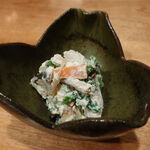
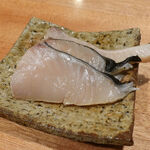
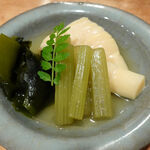

みやせい
5.00
Eating leisurely at the counter makes me feel happy. The sake goes down too easily, though. Would it be a bit lacking if it were non-alcoholic? Each small dish is interesting. This might be the kind of place you don't want to tell others about.
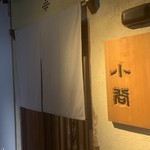
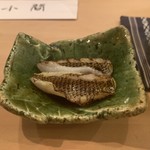

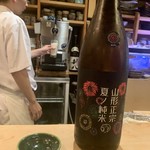
タイガース・ウッズ
4.00
I finally visited a restaurant based on information from MyRebi-san, which I had bookmarked. It operates on a completely reservation-only basis, so it was difficult to find the right timing before, but this time I finally managed to visit. The restaurant is located on the second floor of a building that gives off a Showa era vibe, with no signs of any food and beverage establishments. On this day, the chef was handling everything alone. The interior of the restaurant has less than 10 counter seats, one table for four people, and a private room with a sunken hearth. The regular salaryman customers were already seated at the counter, and a customer who seemed to be there for business entertainment went into the private room later. In the middle of the meal, a regular salaryman who came to inform the restaurant of his next reservation and the chef, who is beloved by regular customers. The style of the restaurant is omakase only. I had requested the menu for the day in advance when making the reservation, as I had read in previous reviews that many small dishes are served. When I was seated at the counter, they had prepared a neatly written menu like the one in the photo. Let's start by quenching our thirst. - Draft beer Kirin Ichiban Shibori, skillfully poured with the golden ratio of foam. - Appetizer - Mackerel steamed in oil - Swordfish waraibushi - Long eggplant simmered go-kori - Horse mackerel pressed sushi After finishing the beer, I switched to local sake as usual. They brought me the following sake upon my request for "pure rice types that are interesting": - Yamagata Masamune Natsu no Junmai Yoru no Bu / Mitsubasake Brewery (Tendo City, Yamagata Prefecture) Established in 1898 (Meiji 31), the brewery uses water from the upstream area of the famous temple "Yamadera" as the source, which has a hardness of about 120. I had previously tried "Yamagata Masamune Junmai Karakuchi" at Rakuzen in Osaka. This time, I tried their sake made from their self-cultivated Yamagata sake rice "Dewasansan," with 60% polishing ratio, featuring a label with fireworks. - Fried food - Karaage of majaku, zucchini, and squid dumplings wrapped in yuba. This was my first time trying "majaku," which is similar to shako but belongs to a different category and is said to be a type of ana-jako. For the next drink, I had: - Houken Junmai Sake Hattan Nishiki / Houken Sake Brewery (Kure City, Hiroshima Prefecture) Established in 1872 (Meiji 5), the brewery was founded by the second son of the president, who was once a wild child. He became the fifth-generation toji at the age of 20 and won the national sake tasting championship in 2004, gaining widespread attention. I had previously tried various types of their sake at different places in Hiroshima. This time, I tried their sake made from Hiroshima sake rice "Hattan Nishiki" with a 60% polishing ratio, which seems to go well with warm sake and has a taste that doesn't get boring. - Sashimi - ??? with plum on top - Needlefish, water squid - Seared red sea bream - Clam - ??? with peanuts and bean sprouts? - Sandfish - Whale tendon sashimi Since the sashimi went well with the sake, I decided to have one more drink. - Kaiun Special Junmai RyoRyo / Doi Sake Brewery (Shizuoka) Established in 1872 (Meiji 5), the brewery is known for contributing to Shizuoka's reputation as the "Ginjo Kingdom." I had previously tried various types of their sake at different places in Shizuoka. This time, I tried their summer limited edition made from the king of sake rice "Yamada Nishiki" with a 55% polishing ratio, brewed with Shizuoka yeast "NEW-5." As the name suggests, it has a refreshing and clean taste. - Horse mackerel - Simmered dish - Soft-boiled octopus - Steamed dish - Chawanmushi with plum sauce - Kenkonichi Special Junmai Karakuchi / Onuma Sake Brewery (Miyagi Prefecture) Established in 1712 (Sho...
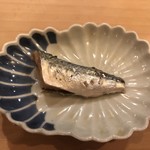
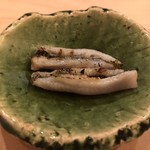
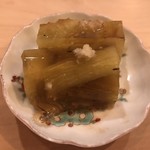
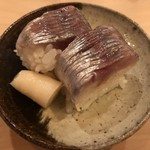
Ⓜ︎aboroshi
4.50
This is a must-visit shop when you go to Fukuoka. Here, you can enjoy delicious dishes in small portions, with a variety of flavors. What's great is that the prices are reasonable, starting from around 8,000 to 10,000 yen, so you can be satisfied without breaking the bank. The owner may look intimidating at first, but once you start a conversation, he shows a kind smile. He looks a bit like Kato Cha, and if you point that out, he might get a little angry, haha. If you're looking for a small restaurant in Fukuoka, I recommend this place.
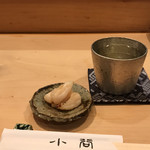
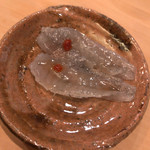
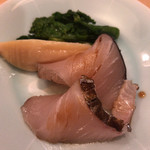
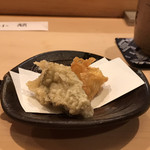
JA3881
5.00
It was a very enjoyable time. A must-visit restaurant when in Fukuoka, you would regret missing it.
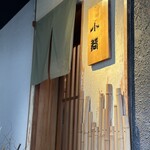


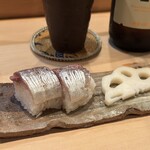
nori964
5.00
We had a lot of delicious dishes with the omakase course at the traditional Japanese restaurant.
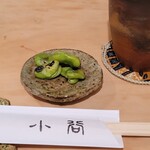
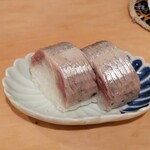
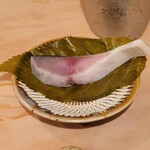
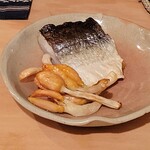
食いしんぼう22
3.90
This is a shop near Hakata Station where you can enjoy seasonal fish served in small plates. Most dishes are delicious, but the aged squid sashimi stood out with its sweetness and was excellent. I will definitely visit again.
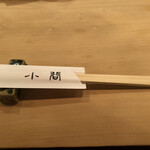
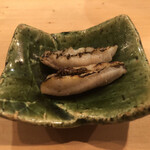
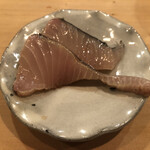
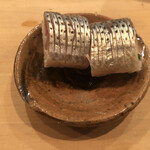
hiron695982
4.50
The deliciousness remains as wonderful as ever. I feel happy being able to enjoy a variety of delicious foods little by little.

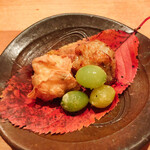
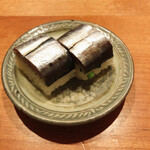

nori964
5.00
I had a wonderful experience at this hidden gem traditional Japanese restaurant where I enjoyed a variety of dishes chosen by the chef.
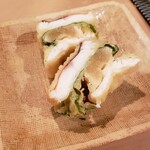
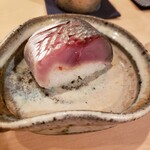
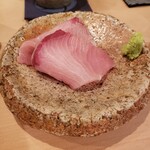
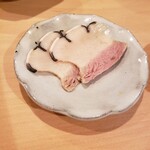
nori964
5.00


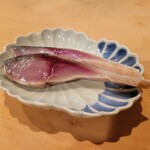
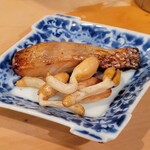
メトメ
4.50
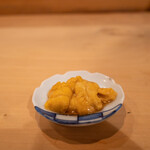

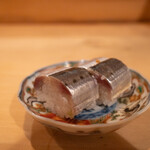
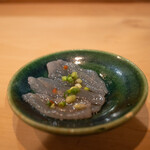
choccoz
4.30
I am always completely satisfied whenever I come here.
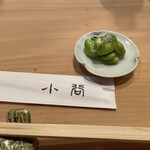

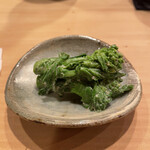
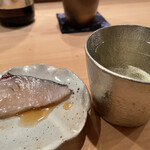
Email Login